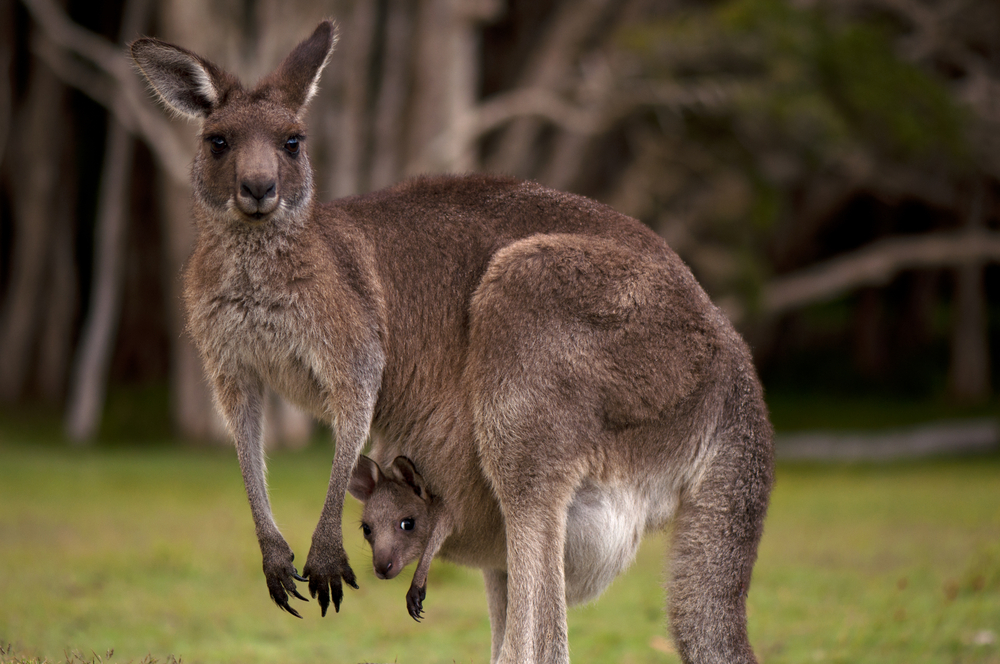Ancient Kangaroo Teeth Reveal Australia’s Tropical Past

The fossilized teeth of ancient marsupials that roamed through northeastern Australia roughly 2.5 million years ago suggest these animals fed on leafy plants in a much more lush and tropical environment than was previously thought, according to a new study.
A chemical analysis of tooth enamel from extinct marsupials in Queensland, the second-largest state in Australia, revealed clues about the diet and habits of these ancient mammals. The findings indicate that this region of Australia, which today is made up mostly of arid grasslands, was once covered in tropical forests, said Shaena Montanari, a comparative biologist at the American Museum of Natural History in New York and lead author of the new study.
"It was probably a wetter and moister environment," Montanari told LiveScience. "Marsupials have been around in Australia for tens of millions of years, but these fossils help us understand how their diets changed with the environments." [Marsupial Gallery: A Pouchful of Cute]
Montanari and her colleagues studied fossilized teeth from a variety of early marsupials, including two that are in the same genus as present-day kangaroos and wallabies. The fossils dated back to the early- to mid-Pliocene epoch, which extends from 2.5 million to 5 million years ago, but most of the animals in the study went extinct approximately 50,000 years ago, Montanari said.
"Some of them would have looked similar to modern kangaroos, but were much larger," she explained. "They probably looked like giant kangaroos with longer noses. One of the animals we looked at, called Euryzygoma, would have looked quite different from typical Australian megafauna. People sometimes call it a giant wombat, but it was much larger and looked very different."
All in the teeth
To understand the diets of these marsupials, the researchers drilled some of the enamel off the teeth, ground it into a powder and performed laboratory tests to look for specific chemical signatures.
Sign up for the Live Science daily newsletter now
Get the world’s most fascinating discoveries delivered straight to your inbox.
As an animal grows and its teeth are being formed, chemical traces of what it eats and drinks become locked into the enamel, Montanari explained. For instance, scientists can examine an animal's tooth enamel to determine characteristics of the water that was consumed while its teeth were growing.
"In herbivores, carbon signatures will provide information on what plants they were eating; oxygen isotopes indicate what the water was like — was it an evaporated source of water, or was it seawater?" Montanari said.
The enamel tests revealed that ancient marsupials in Queensland feasted on plants and shrubs that are typically found in more temperate and tropical areas. This indicates that environmental conditions and patterns of foliage were vastly different in this part of Australia during the Pliocene epoch, the researchers said.
The marsupial dental records show that these extinct mammals lived in a more heavily forested environment, with less grassland available for food, said Judd Case, dean of the College of Science, Health and Engineering at Eastern Washington University in Cheney, Wash., who was not involved with the new study.
"The results of this paper have opened a new window into the past that can be used to evaluate the other Pliocene localities in Australia, where these same animals also occur," Case told LiveScience. " Additionally, their study provides us tools to interpret the environments and marsupial niche differentiation in these other localities as well."
By studying the prehistoric diets of these animals, researchers can also gain a clearer picture of how ancient marsupials evolved in Australia, and what caused their extinction.
"This is a chemical tool to help us understand a lot more about these interesting fossils and time periods," Montanari said. "In paleontology, we tend to look a lot at morphology, but chemical studies of fossils can tell us about diets and environments, which can help us understand about extinction and evolution."
The detailed findings of the new study were published online today (June 12) in the journal PLOS ONE.
Follow Denise Chow on Twitter @denisechow. Follow LiveScience @livescience, Facebook & Google+. Original article on LiveScience.com.

Denise Chow was the assistant managing editor at Live Science before moving to NBC News as a science reporter, where she focuses on general science and climate change. Before joining the Live Science team in 2013, she spent two years as a staff writer for Space.com, writing about rocket launches and covering NASA's final three space shuttle missions. A Canadian transplant, Denise has a bachelor's degree from the University of Toronto, and a master's degree in journalism from New York University.









